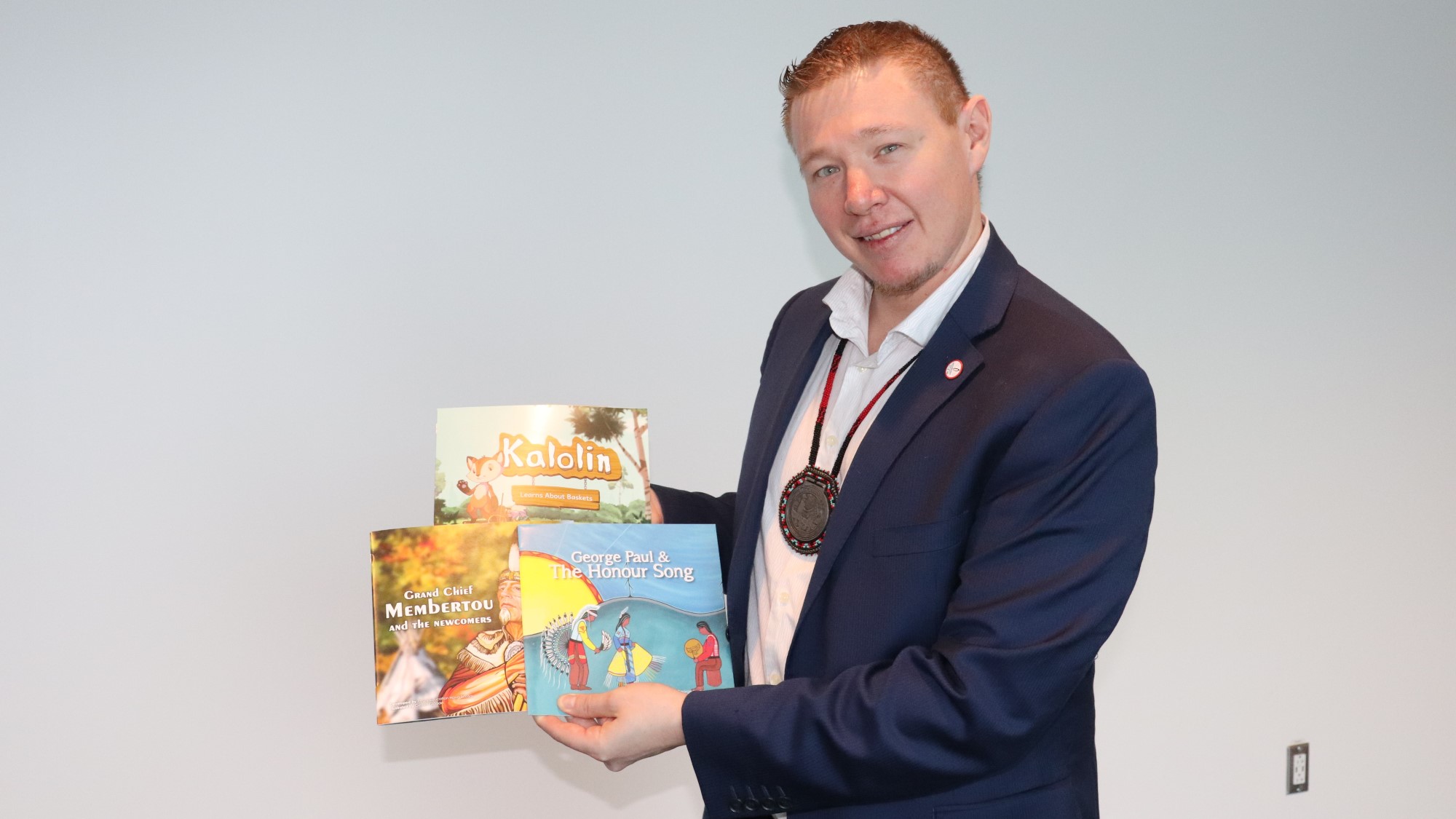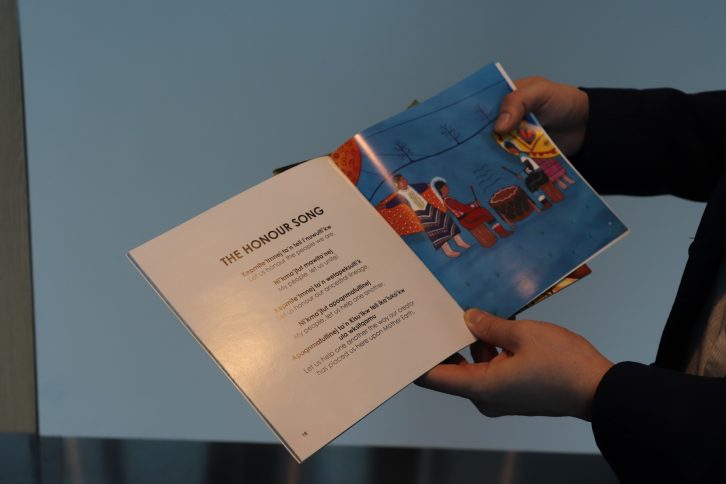Treaty Education
Children’s books about Mi’kmaq history being released next week
All ages need different tools to learn

caption
Jaime Battiste holding three of the children's books to help youth learn about Mi'kmaq history.Learning about the history of treaties isn’t just for people old enough to count to 267: the number of years since the Peace and Friendship Treaty was signed in Halifax.
Nova Scotia is publishing a series of children’s books, complete with colourful illustrations, to help younger generations understand Indigenous history.
The same tools used for high school students wouldn’t teach children who “still count everything by how many sleeps there is,” Jaime Battiste, the Nova Scotia Treaty Education Lead said during a workshop for the First Nation Directors of Education National Forum on Wednesday in Halifax.
The forum takes place in a different Canadian location each year, with the goal of improving education regarding Indigenous people.
During a treaty education workshop, speakers from British Columbia, Manitoba, Saskatchewan and Nova Scotia explained how their provinces are working to educate youth about treaties.
Nova Scotia is newer to developing treaty education, compared to the other three provinces. Battiste, who was involved in Nova Scotia’s program development, worked with treaty commissioners from the other provinces but structured Nova Scotia’s approach differently.
Battiste said an important thing for Nova Scotia is to incorporate treaty education into the existing curriculum, instead of making it a separate course. In Saskatchewan and Manitoba, the material is designed for separate courses.
During the workshop, Battiste showed participants some of the books the provincial government plans on putting in every school across the province. The province is distributing them to reserve schools first, starting next week.

caption
The book explaining the Honour Song.The books range in topics from profiling the grand chiefs who helped settlers survive, to explaining the Honour Song, to describing what treaties are; like the 1752 Peace and Friendship Treaty signed in Halifax by Chief Jean Baptiste Cope.
Lisa Sappier, from Woodstock First Nation New Brunswick, is the director of a preschool and daycare in her area. After attending the previous day of the conference, which was focused on treaty education, she said she wanted to learn more.
“We don’t have that in New Brunswick yet,” said Sappier. “We’re not there.”
She said hearing from the West Coast commissioners helps East Coast leaders figure out what needs to be done in the Maritimes.
The Saskatchewan Office of the Treaty Commissioner began in 1989. Nova Scotia’s treaty education officially began in 2015, when Premier Stephen McNeil, Chief Leroy Denny and Chief Robert Gloade signed a memorandum of understanding on treaty education.


D
Doreen Richard
L
Lorraine Smith-Collins
D
Dr. Sarah Palmer
K
Ken
D
Dorothy Mariner (nee Francis)